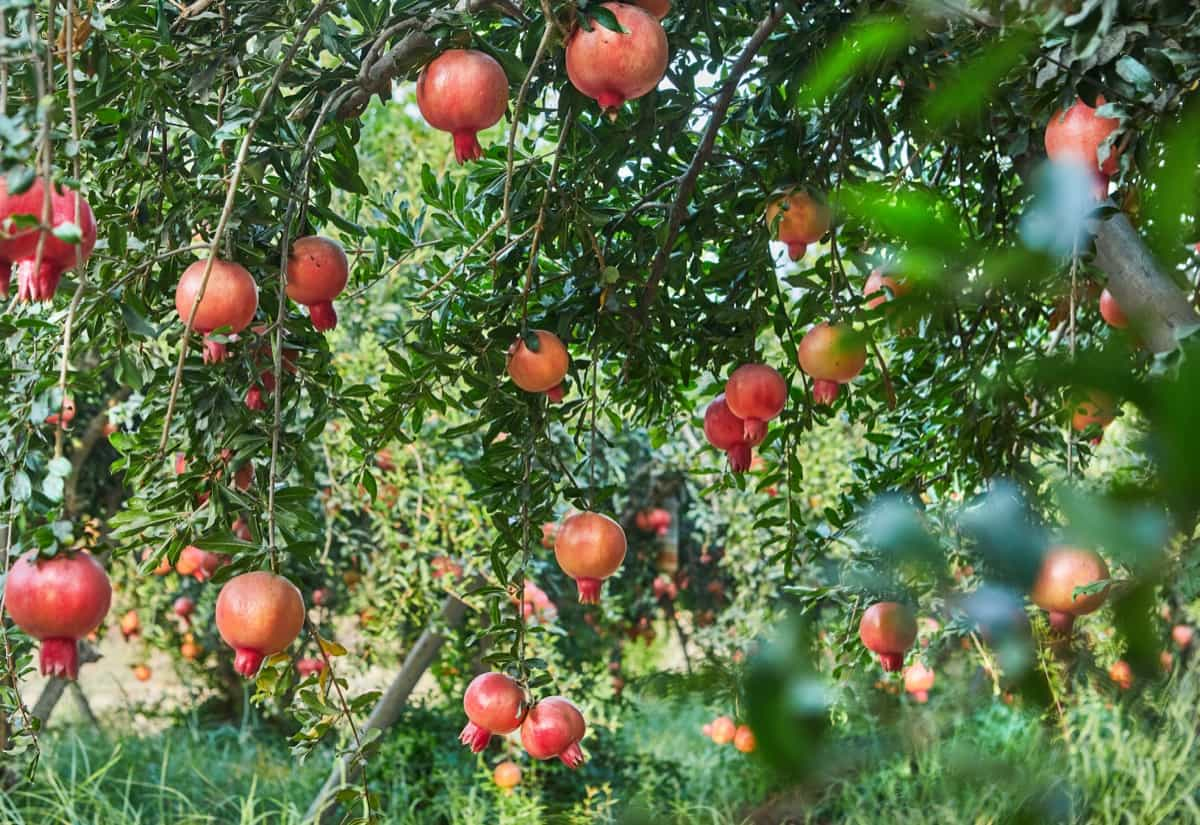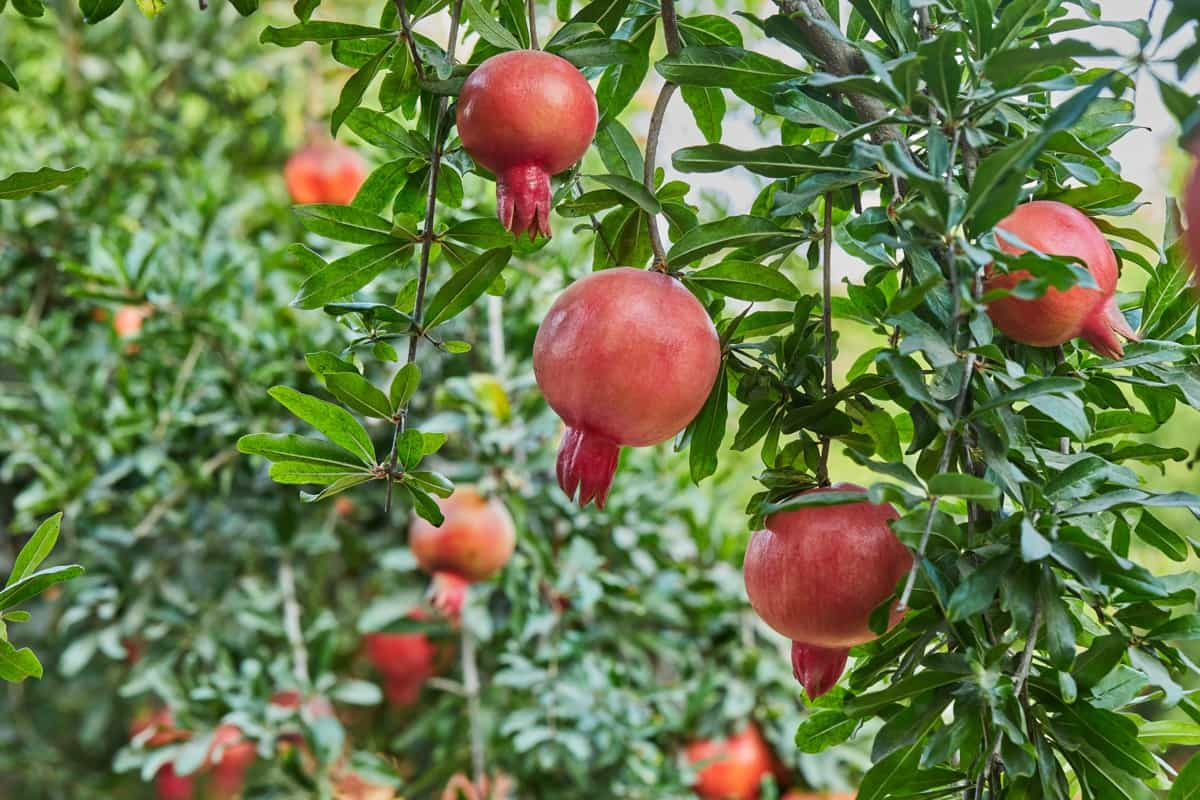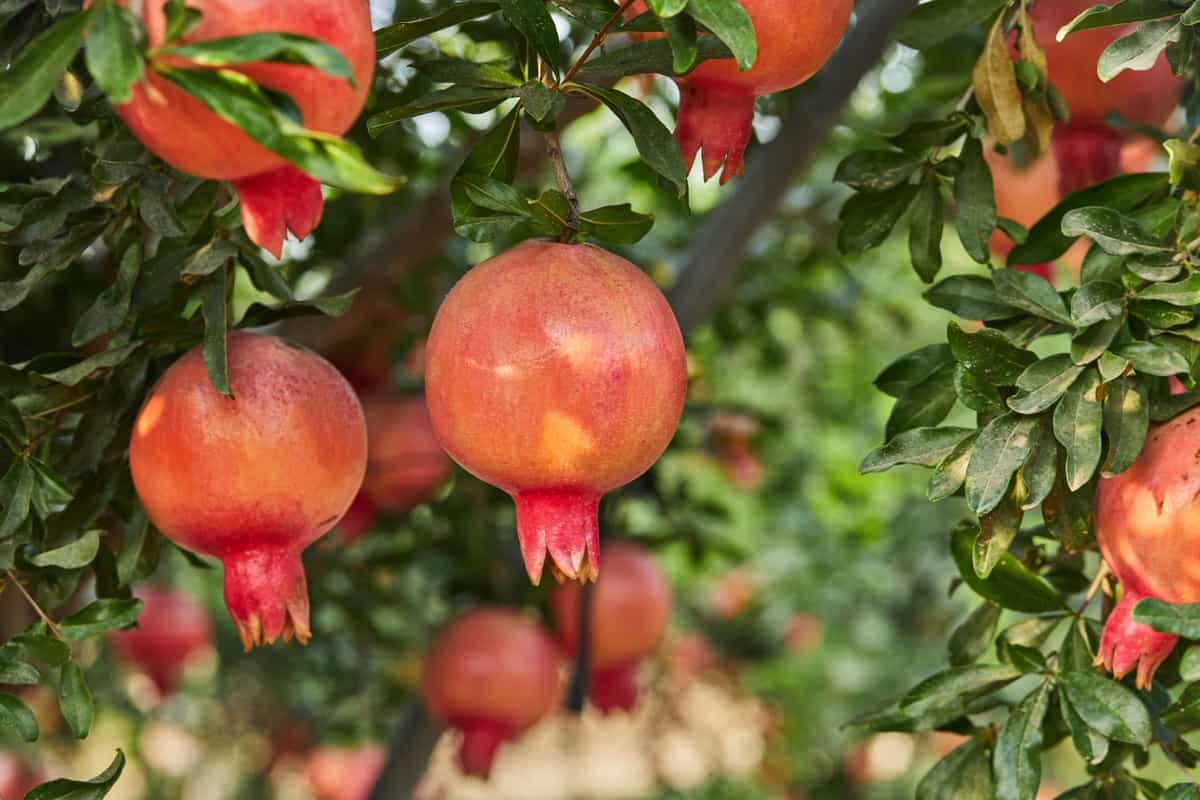Controlling pests in a pomegranate orchard is essential for maintaining healthy and productive fruit trees. Pomegranates are susceptible to various pests that can damage the tree’s fruit, leaves, and overall health. While chemical pesticides are a common pest control method, many people prefer natural and organic treatments to protect the environment and health. In this guide, we will explore how to control pomegranate pests using natural and organic methods.

How to Control Pomegranate Pests Naturally
Pomegranate Pests: Identifying the Most Common Pests and Their Impact on Your Crop
- Among the most common pomegranate pests is the Anar butterfly, also known as the Pomegranate fruit borer, which lays eggs on pomegranate fruit, leading to larval damage.
- The Stem borer, a larval insect, bores into pomegranate branches, weakening them.
- Whiteflies cluster on the undersides of leaves, feeding on sap and leaving a sticky residue. The Shot hole borer burrows into branches, causing dieback.
- Thrips are slender insects that damage leaves and flowers by puncturing and feeding on plant tissues.
- Tailed mealy bugs and aphids feed on plant sap, leading to distorted growth and wilting.
Natural and Organic Methods for Controlling Pomegranate Pests: An Overview
Using Neem Oil to Control Pomegranate Pests: A Safe and Effective Method
Neem oil is a safe and potent solution for pomegranate pest control. Derived from the neem tree, it disrupts pests’ feeding and reproductive cycles while posing minimal risk to beneficial insects and the environment. This organic remedy effectively targets common pomegranate pests like aphids, thrips, and whiteflies. Regularly applying neem oil to your trees protects your pomegranates from infestations, ensuring healthier and chemical-free fruit.
The Role of Beneficial Insects in Controlling Pomegranate Pests: Introduction of Predatory Insects
Beneficial insects, like ladybugs, lacewings, and parasitic wasps, are crucial in natural pest control in pomegranate orchards. These predators feed on harmful pests like aphids, whiteflies, and caterpillars, helping to maintain a balanced ecosystem. Introducing these beneficial insects into your orchard is an eco-friendly approach to reducing pest populations without resorting to chemical pesticides. By encouraging these natural allies, you can protect your pomegranate trees and promote a healthier, thriving environment.
Companion Planting: How Planting Certain Plants Together Can Deter Pomegranate Pests
Companion planting involves strategically placing pest-repelling plants near pomegranate trees. Marigolds, mint, and basil are excellent choices, as their fragrances deter common pests like aphids and whiteflies. These companion plants create a natural barrier, reducing the risk of infestations and promoting a healthier pomegranate orchard. This eco-friendly and sustainable approach enhances pest resistance without the need for chemical interventions.
In case you missed it: How to Treat Common Guava Fruit Diseases: Symptoms, Causes, and Management

Crop Rotation: How Rotating Your Pomegranate Crop Can Help Control Pests
Crop rotation is a valuable strategy for managing pomegranate pests. By planting different crops in a location where pomegranates previously grew, you disrupt the life cycles of pests that target pomegranates. This reduces the risk of reinfestation and the buildup of specific pest populations. Crop rotation helps maintain soil health, prevents soil-borne diseases, and minimizes the need for chemical pest control methods, ensuring long-term sustainability in your pomegranate cultivation.
Using Diatomaceous Earth to Control Pomegranate Pests: A Non-Toxic and Organic Method
Diatomaceous earth, a naturally occurring, finely powdered substance made from the fossilized remains of diatoms, serves as an effective, non-toxic, and organic method for controlling pomegranate pests. When sprinkled around the base of pomegranate trees, diatomaceous earth acts as a mechanical barrier.
Its microscopic, sharp-edged particles puncture the soft bodies of crawling pests, such as ants and slugs, effectively dehydrating and killing them. This method is safe for the environment, beneficial insects, and humans, as it doesn’t involve chemical toxins. Moreover, diatomaceous earth can help deter pests while providing added benefits by improving soil structure and moisture retention.
Traps and Barriers: How to Use Traps and Barriers to Control Pomegranate Pests
Traps and barriers are valuable tools in the arsenal of pomegranate pest control. Yellow sticky traps can capture flying pests like whiteflies and aphids, reducing their populations. Tree trunk wraps, or sticky bands around the base of trees, prevent crawling pests, like ants and certain borers, from ascending and infesting pomegranate branches. When used correctly, Row covers provide a protective barrier against birds, insects, and other potential pests. These non-chemical methods offer targeted control, reducing the need for pesticides, promoting healthier pomegranate trees, and protecting fruit yields.
Biological Control: How to Use Parasitic Wasps to Control Pomegranate Pests
Biological control through introducing parasitic wasps is an effective and eco-friendly method for managing pomegranate pests. Parasitic wasps are natural predators of various insect pests, including aphids and caterpillars that harm pomegranate trees. By releasing these beneficial insects into your orchard, they seek out and parasitize the pest species, effectively reducing their populations. This method offers a sustainable approach to pest management, reducing the requirement for chemical pesticides and minimizing harm to beneficial insects and the climate.
In case you missed it: Chilli Fruit Borer Pest Management: Symptoms, Treatment, Chemical, Biological, and Organic Control

Integrated Pest Management (IPM): A Holistic Approach to Controlling Pomegranate Pests
Integrated Pest Management (IPM) is a comprehensive strategy that combines multiple pest control methods to minimize the impact of pests on pomegranate trees. It emphasizes prevention, monitoring, and the use of non-chemical methods before considering the use of pesticides.
IPM involves regular pest scouting to detect issues early, the use of traps and barriers, biological controls like beneficial insects, and cultural practices such as proper pruning and crop rotation. IPM encourages sustainable, environmentally friendly practices and helps maintain pomegranate orchards’ long-term health and productivity while minimizing the ecological impact of pest control.
Pomegranate Pest Control with Natural & Organic Treatment
| Pest | Natural and Organic Treatment |
| Anar butterfly/ Pomegranate fruit borer | Apply neem oil to deter egg-laying and larval infestation. Prune and remove infested fruit. |
| Stem borer | Encourage beneficial insects like parasitic wasps. Keep the orchard clean and remove infested branches. |
| Whitefly | Release ladybugs and lacewings to prey on whiteflies. Use yellow sticky traps. |
| Shot hole borer | Apply neem oil to the affected areas. Prune and remove severely infested branches. |
| Thrips | Release predatory insects like minute pirate bugs. Apply neem oil to deter thrips. |
| Tailed mealybug | Release parasitic wasps to control mealy bug populations. Use neem oil or insecticidal soap. |
| Aphid | Encourage ladybugs, lacewings, and hoverflies. Apply neem oil or garlic and chili spray. |
In case you missed it: How to Stop Insects Eating Plant Leaves Naturally: DIY Home Remedies for Controlling Leaf-Eating Insects

Conclusion
Please note that these are general organic and natural treatments. The effectiveness of these may vary depending on the severity of the infestation and local conditions. Regular monitoring of your pomegranate orchard is essential for early detection and effective pest management.
- Beneficial Insects in Pest Management
- Natural Solutions for Pest Control in Flower Gardens
- Types of Fungicides Used in Agriculture
- Common Issues in the Fruit Development Stage of Pomegranate Farming
- Fruit Development Issues in Papaya: Easy Solutions and Treatment
- Soil-Borne Diseases and How to Protect Your Plants
- Practices to Prevent Disease Spread in the Garden
- From Wilted to Thriving: How to Treat Root Rot Naturally in Houseplants
- Natural Remedies to Cure Brown Spots on Fig Tree Leaves